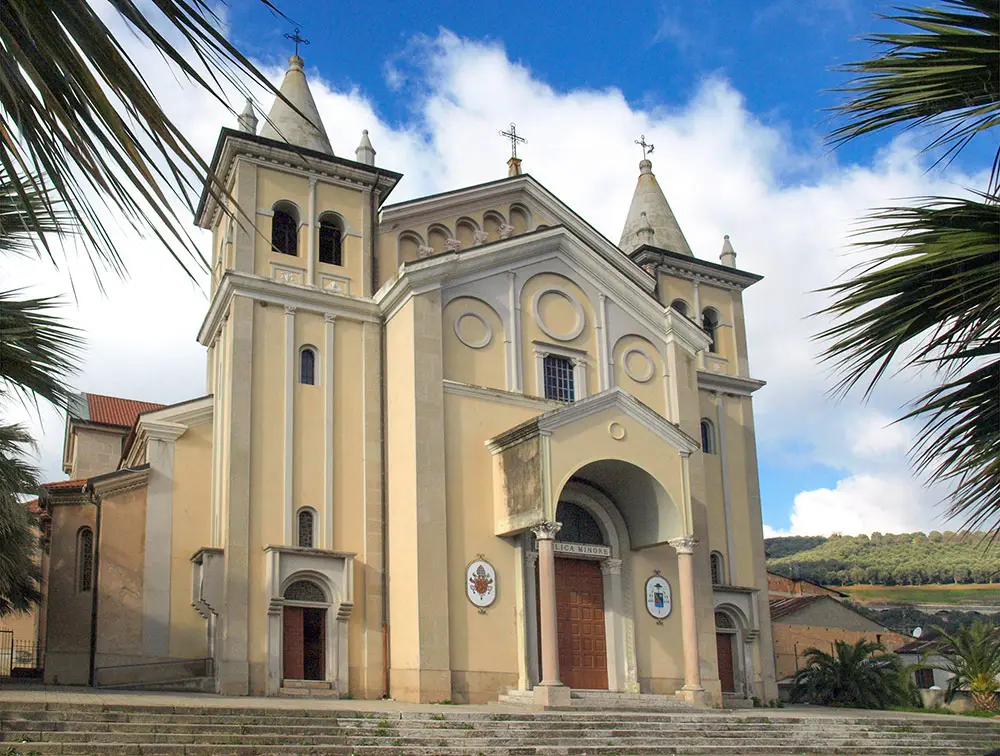Discovering the artistic ceramics of Seminara
A dive into the village famous for the masks that fascinated even Picasso

Art and Culture
Ceramiche di Seminara - Regione Calabria
It is like an embrace enclosing the sky, the sea and the mountains. The cliffs and crystal-clear waters of the Costa Viola on one side, the slopes of Aspromonte on the other: from whichever perspective one turns one's gaze, Seminara - wrapped in the green of the centuries-old olive trees of the Piana di Gioia Tauro - fills the eyes with beauty.
The ceramic of Seminara
Mouths wide open, tongues long, eyes wide. You will see them on the doorstep and know that you have arrived in the heart of the village, where these "apotropaic" masks (which, according to popular belief, keep evil away) are part of a tradition that has spanned the centuries and has imbued the history and identity of the place.
After a stroll through the alleyways, inside the workshops it will be the master ceramists known as "pignatari" (potters) who will guide you in the discovery of the world-famous colourful artefacts, whose shapes and vivid colours fascinated even the painter Pablo Picasso. And there are certainly not only the "demons" of the superstitious masks, but also lanterns, bottles, anthropomorphic flasks (in dialect babbaluti), amphorae, jugs, the famous hedgehog-shaped jars, pine cones, and mermaids.
Each piece is unique, skilfully moulded using ancient techniques of Byzantine origin, handed down from father to son like the most precious of inheritances. There is no tourist who can resist the charm of these ceramics, made in styles and decorations that have spanned the centuries without ever losing their power to enchant.
In 1746, there were no fewer than 23 workshops in Seminara and a few years later, in 1777, the British writer and traveller Henry Swinburne, passing through during his stay in Calabria, noted in his notebook the "ferment of ceramic workshops" that had struck him as he strolled through the streets of the town in the province of Reggio Calabria.
The same amazement is felt today when observing how from clay, the skilled hands of ceramists manage to create unique and unrepeatable forms. To take a closer look at the beauty of ancient and modern artefacts and learn about their history and significance, visit the Ceramics Museum of Seminara.

What to see in Seminara and its surroundings
A tour of the craftsmen's workshops is a good excuse to visit Seminara, a treasure chest of art and culture surrounded by greenery. In the village - which in 1290 was the birthplace of the philosopher, theologian and mathematician Barlaam Calabro, Petrarch's and Boccaccio's Greek teacher - the stratification of history has left fascinating and evocative traces, especially in the religious buildings.
Also worth mentioning is the Basilica Shrine of Maria Santissima dei Poveri, a church in neo-Romanesque style but best known for its wooden statue of the Ebony-skinned Madonna. Passing by the remains of the Mezzatesta Castle, an ancient 17th-century palace, the Byzantine Monastery dedicated to Saints Elijah and Philarete, where the monks celebrate services according to the Orthodox rite, is certainly worth a stop.
Leaving the ancient walls of the old town behind, all that remains is to dive into the generous nature that envelops the village. It is not easy to get there since it can only be reached by sea, but the beauty of Cala Janculla, the jewel of the Costa Viola with its crystal-clear waters, repays all efforts.
Waterfalls, gorges and canyons, on the other hand, form part of the panorama of the Archaeological Area of Barritteri, a destination for trekking and walking enthusiasts. Here, while exploring the unspoilt nature, you may come across rocks on which words in ancient Greek are engraved or spot a spectacular waterfall or discover an ancient watermill.

https://calabriastraordinaria.it/en/news/discovering-the-artistic-ceramics-of-seminara




